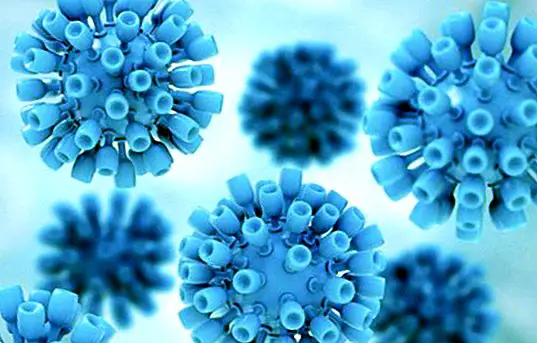Hepatic steatosis: what it is, symptoms, causes and treatment
The one named as hepatic steatosis, commonly known in the social field as fatty liver, is a benign disease in most cases which tends to affect the liver, a fundamental and essential organ for the proper functioning of our body, and vital precisely for life by the very important functions in which it participates.
It is a condition that usually does not cause problems, as long as it is not accompanied by inflammation, a condition that is medically known by the name of steatohepatitis, which is when the inflammation of the liver is due to the excessive presence of fat in the hepatocytes (your cells). This complication is what, ultimately, could end up producing necrosis and eventually lead to liver fibrosis.

What is hepatic steatosis? Is it normal to have steatosis in the liver?
Believe it or not, hepatic steatosis is more normal than you think. In fact, many of the people who are reading us at these precise times may have an excess of fat in their liver, and yet, as it tends not to produce symptoms in many cases, they do not know it and may not discover it until some diagnostic means helps to find it (for example, during a routine abdominal ultrasound).
And we say that hepatic steatosis is very common because it is estimated that It is a pathology that affects 20% of the adult population; and what is even worse, it is believed that it could affect 5% of the child population. Its causes? As we will see carefully in the section dedicated to this, fundamentally the bad diet and the unhealthy habits that we maintain today (not only follow an unbalanced diet rich in fats and sugars, but also for the little or no practice of physical exercise).
Incidentally, did you know that our liver normally has small amounts of fat? In fact, it is medically considered normal when this amount of fat accounts for about 10% of its weight. Therefore, when this accumulation of fat exceeds this amount and therefore is excessive is when we are facing the hepatic steatosis.
And what is hepatic steatosis? It basically consists in the excessive accumulation of fat in the liver, above the values considered normal.
And why is it produced? Fundamentally because the liver is unable to eliminate fatty acids and triglycerides, so that gradually these fats are accumulated in the liver cells or hepatocytes.
As we can see, although it is a normal disorder that affects many people in the world today, we must bear in mind that hepatic steatosis becomes serious when it causes hepatomegaly and inflammation (steatohepatitis). Put another way: when it causes not only the inflammation of our liver, but also causes an enlargement of it.
Luckily, except for a few cases, in the majority we have a mild hepatic steatosis, which is medically referred to asGrade 1 hepatic steatosisor2, which usually does not give complications or progress to more serious stages, or cause symptoms. That is to say, The accumulation of fat in the liver does not cause inflammation because it is small.
What are the causes of hepatic steatosis?
Until very recently it was thought that the accumulation of fat in the liver was due solely and exclusively to a habitual and excessive consumption of alcoholic beverages. However, in most cases, it has been discovered that hepatic steatosis is actually found and diagnosed in people who do not drink alcohol chronically.
We can now establish the main causes of hepatic steatosis. In short, when the cause is not related to the consumption of alcoholic beverages, we are faced with a non-alcoholic hepatic steatosis:
Excess weight, especially overweight and obesity
Excess weight is one of the most common causes of fat in excessive amounts in the liver, mainly because that overweight is often accompanied by poor eating habits, and the little or no practice of physical exercise. That is, it is common for food to be based on the consumption of foods with a high caloric content (in the form of fats and sugars), and a sedentary lifestyle is maintained.
It's more, the higher the weight the higher the risk of suffering from hepatic steatosis. And not only steatosis, also that it is complicated and related complications appear.
Rapid weight loss
When we follow a treatment in order to eliminate the presence of fat in the liver, it is not appropriate to lose weight quickly, but it is much more appropriate to do it slowly and slowly. The reason is that a rapid weight loss can favor the appearance of malnutrition, that our liver is overloaded and therefore accumulate more fat.
Consumption of alcohol, even in small amounts
Some years ago it was thought that alcohol consumption was the only cause of hepatic steatosis. Although that is still true, as we are seeing, it is not the only cause. However, the consumption of alcoholic beverages is closely related to alcoholic fatty liver disease, even if that consumption is small but it is maintained on a regular basis every week.
Cholesterol and elevated triglycerides
When there are high levels not only of high cholesterol, but especially of triglyceridesIt is very common that the person also has hepatic steatosis.
Type 2 diabetes
The considered as adult diabetes(mainly because it tends to appear especially in adulthood), may also influence the appearance of steatosis, since it directly influences the accumulation of fat in the liver. The same happens in case of suffering insulin resistance.
Symptoms of hepatic steatosis
In many cases, hepatic steatosis produces no symptoms. However, when they appear, the main signs are usually pain and discomfort that is located in the upper right part of the abdomen.
In turn, it is accompanied by general malaise and chronic fatigue, as well as an annoying and uncomfortable feeling of heaviness, which appears especially after having eaten.
We summarize below what are the main symptoms of hepatic steatosis, especially when they appear:
- Pain in the upper right part of the abdomen.
- General discomfort.
- Fatigue.
- Chronic fatigue
- Weightloss.
- Heaviness sensation
- On some occasions, jaundice.
Diagnosis of hepatic steatosis
As we have seen, since most people with steatosis have no symptoms, their diagnosis becomes very complicated. In fact, it is very common to find yourself in a surprise way when performing an abdominal ultrasound.
In any case, a non invasive and effective technique to diagnose it is precisely by performing an abdominal ultrasound, which consists of an examination of images used in order to observe and visualize the internal organs that are in the abdomen, as not only it is the case of the liver, but also the gall bladder, the pancreas, the spleen and finally the kidneys.
Another way to suspect whether or not there is a liver pathology is by raising in blood some parameters used to know the functional status of the liver. For example, in the presence of high transaminases and of elevated bilirubin.
Treatment of hepatic steatosis
Did you know there is no specific medical treatment for hepatic steatosis? However, last June we knew of the existence of a new medical treatment, apparently effective, for non-alcoholic fatty liver disease, based on the combination of two useful drugs to eliminate senescent cells of the liver.
But while this therapy arrives, what can be done to treat steatosis? As many medical specialists state, the key is to eliminate those causes and habits that influence the appearance of steatosis. For example, in short, you should avoid drinking alcohol (even in small amounts and not regularly), avoid foods and fatty foods rich in sugars, and avoid sedentary lifestyle.
In other words, it is fundamental:
- Follow a healthy lifestyle.
- Maintain a balanced and healthy diet, consuming fresh fruits and vegetables and avoiding pre-cooked and breaded foods, fried foods, pastries and junk food.
- Practice physical exercise every day, for at least 30 minutes each time.
- Lose weight in a balanced way and by following a nutritionist, in case there is excess weight.
Also, it is very useful purify the liver, and opt for some natural remedy that helps to purify this organ and help it perform its functions, as for example is the case of milk thistle, dandelion and artichoke. This article is published for informational purposes only. It can not and should not replace the consultation with a Physician. We advise you to consult your Trusted Doctor. ThemesLiver diseases Liver



